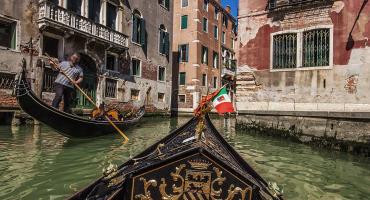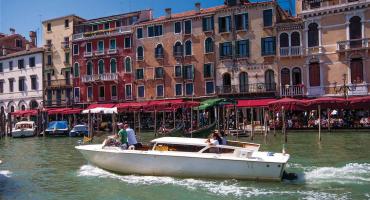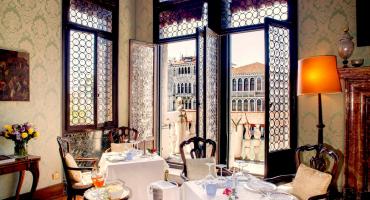The Grand Canal is the main sea route crossing and splitting Venice in two. On the Grand Canal, called the “Canalazzo” by Venetians and defined by Philippe de Commynes (Venice ambassador in the 15th century) "the most beautiful and better built street in the world”, overlook the most beautiful palaces, churches and buildings of the city.
The Grand Canal, almost 4 kilometers long and from 30 to 70 meters wide, forms an overturned S in the heart of the city. Once the main commercial route, linking Saint Mark’s Basin and the lagoon with the trading center of Rialto, it became from the 16th century the place where Venetian aristocracy had its lavish abodes.
The Grand Canal is still today the main arterial ship route in Venice and owe its present develop to the continuous banks lineup and reinforcement works from the 14th century.
On the Grand Canal overlooks a series of luxurious Gothic, Reinaissance and Barcoque palaces from 13 and 18th century, forming a splendid open scenery to whom travels it weather on a gondola or on a public water boat.
Palaces on the Grand Canal
Among the most beautiful buildings along the Grand Canal, starting from Santa Lucia railway station to Saint Mark, we find: Palazzo Labia, built for the rich family Labia and now headquarter of RAI; the Fondaco dei Turchi, the oldest Venetian-Byzantine building of the city, ex storage of the Turkish merchants of the Serenissima and Palazzo Vendramin-Calergi, once house of Richard Wagner and now Venice city town Casino. Going on we find Cà Pesaro, by Baldassarre Longhena, now Museum of Oriental Art and Museum of Modern Art, founded in 1897, on the opposite bank we find Cà d'Oro, magnificent example of Venetian Gothic and perhaps the most beautiful palace of the Grand Canal.
Before Rialto Bridge we find the fish market and the Fondaco dei Tedeschi, once storage of the German merchants in Venice, it has been hosted the Central Post Office until 2008, now it’s a prestige shopping center, open in October 2016.
After Rialto Bridge, the thirteenth-century palaces Cà Loredan and Cà Farsetti, today offices of the Municipality.
At the curve, the eighteen-century palace Palazzo Mocenigo - belonging to one of the most prestigious Venetian family - where Lord Byron stayed in 1818, and the wonderful Palazzo Pisani-Moretta, still now belonging to the Pisani family.
The eighteen-century palace Palazzo Grassi, overlooking the Canal just a bit further, once belonging to the Agnelli family, is now property of the French art tycoon François Pinault and it houses the Museum of Contemporary Art. A little bit further, Cà Venier dei Leoni, hosting the Peggy Guggenheim Collection.
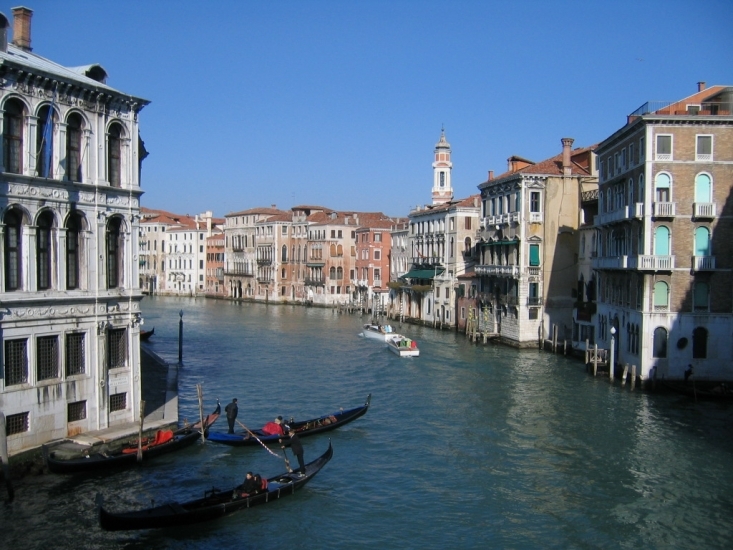
After the Accademia Galleries and the namesake bridge, we find the majestic Church of Santa Maria della Salute, magnificent work by Baldassarre Longhena; coming up next: Punta della Dogana, before ending up in Saint Mark’s Basin, where Saint Mark’s Square overlooks with all the splendour of the Doge’s Palace, Saint Mark’s Basilica and the Bell Tower.
Bridges over the Grand Canal
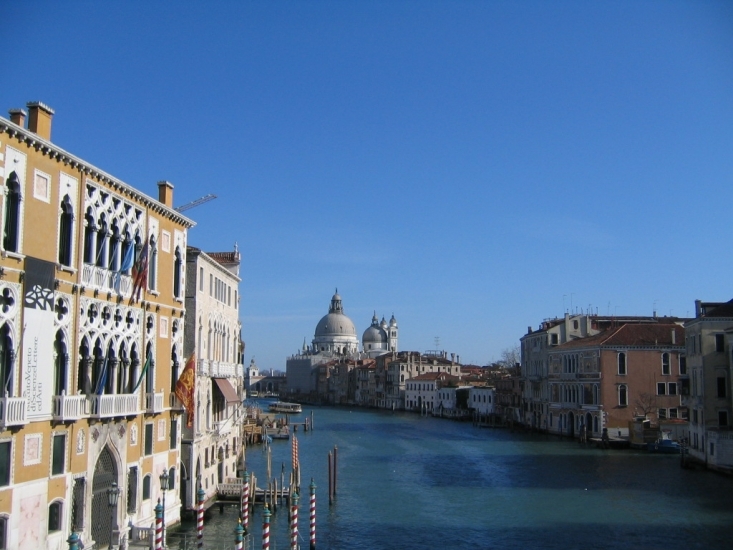
The Grand Canal is crossed by three bridges linking the two part of the city: the most ancient and famous is the Rialto Bridge, originally made of wood, replaced in 1591 by the current stone bridge built under the design of Antonio da Ponte.
The Accademia Bridge, at the foot of the Accademia Galleries, was rebuilt in wood in 1932 as a temporary bridge in replacement of the previous iron one. The current bridge had to be replaced by a new stone one, but the project of 1933 has never been realized.
The Scalzi Bridge is the most recent one and owes its name to the sanctuary of the Discalced Carmelites, at the foot of which rises the stone structure designed by Eugenio Miozzi and which in 1934 substituted the older iron bridge built at the beginning of the 17th century.
The newest one: the Ponte della Costituzione (the “Constitution Bridge") is the fourth bridge over the Grand Canal in Venice, Italy. It was designed by Santiago Calatrava, and was moved into place in 2007 (connecting Santa Lucia railway station to Piazzale Roma), amid protest by politicians and the general public. The bridge was opened to public on September 11, 2008. The bridge was known as Quarto Ponte sul Canal Grande (the fourth bridge over the Grand Canal) before the official name was adopted to celebrate the 60th anniversary of the Italian constitution in 2008.
Tourists and locals in Venice now refer to it as the Calatrava Bridge.

